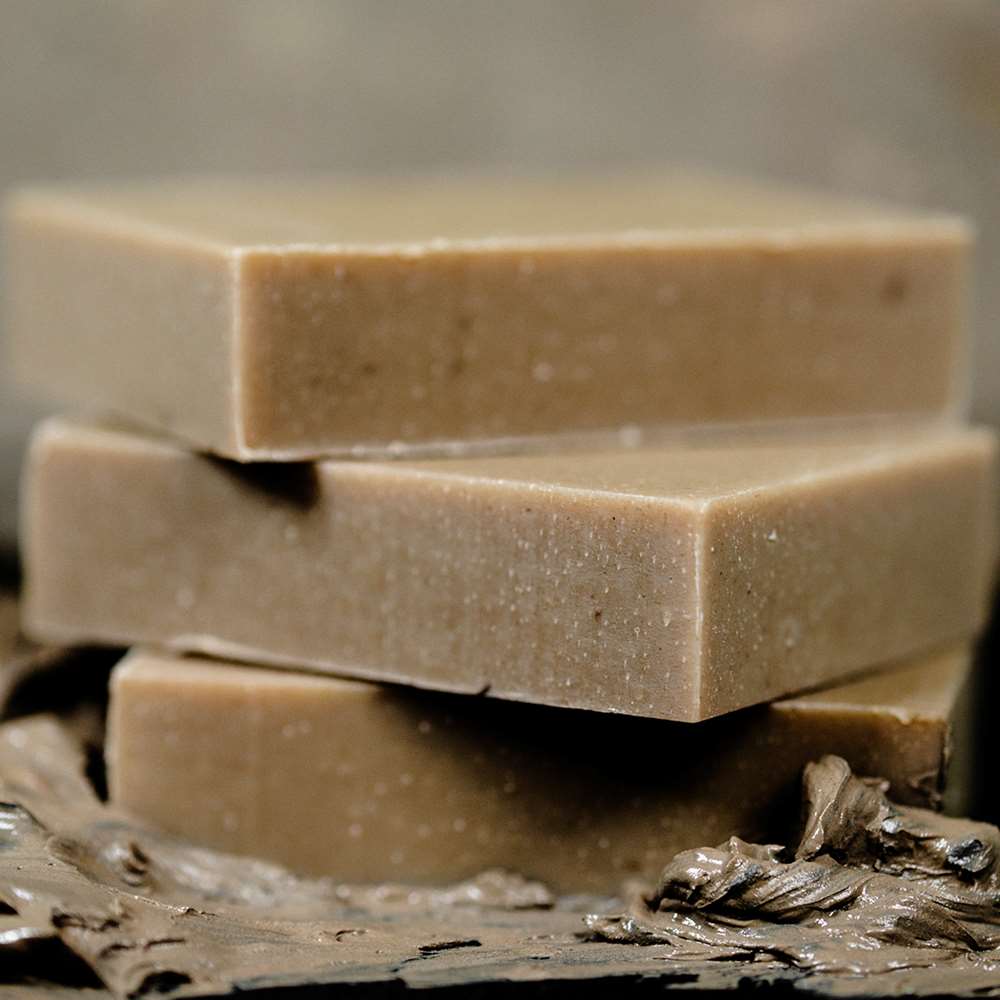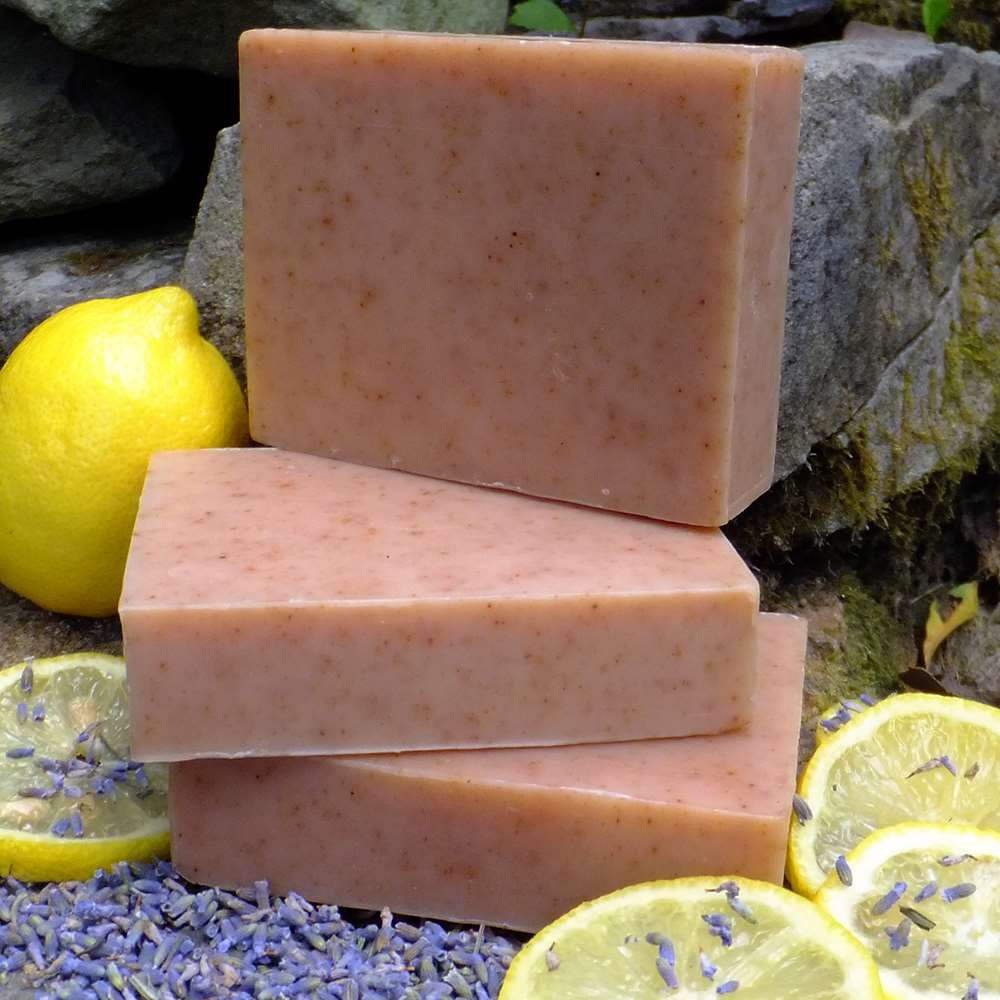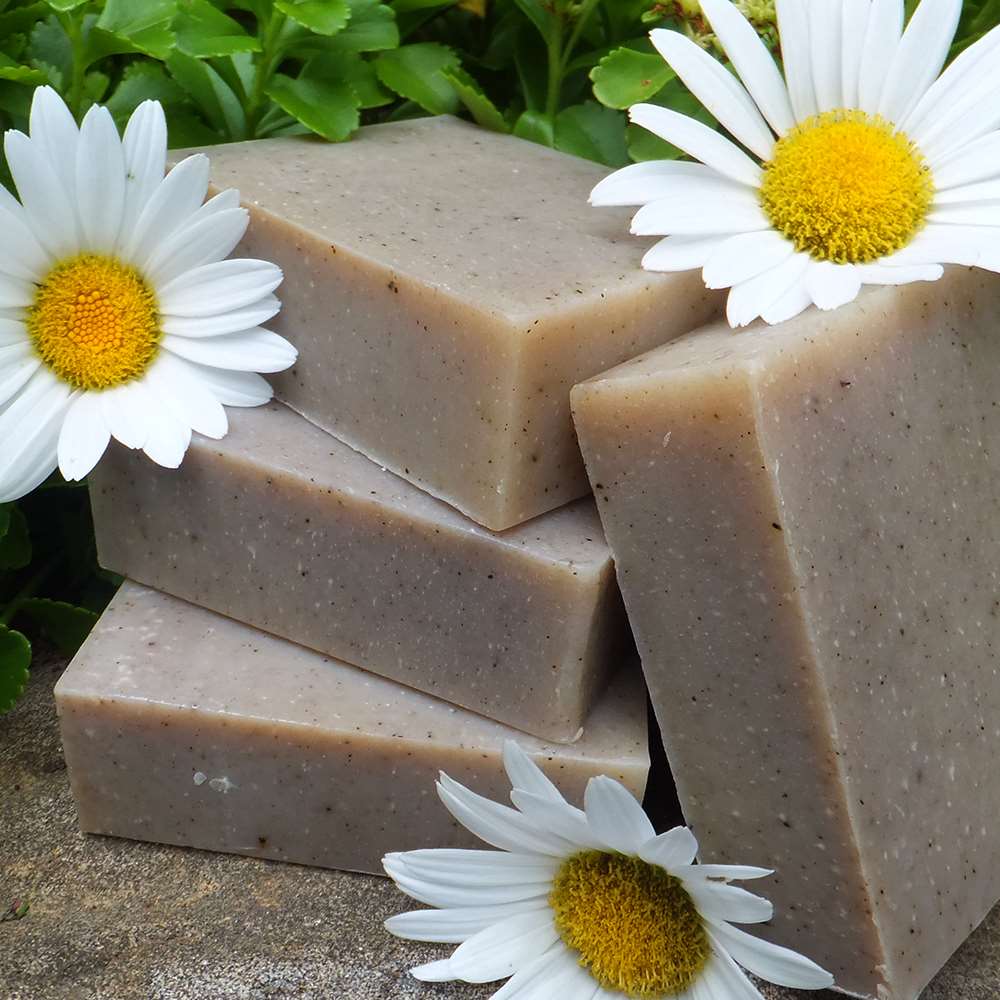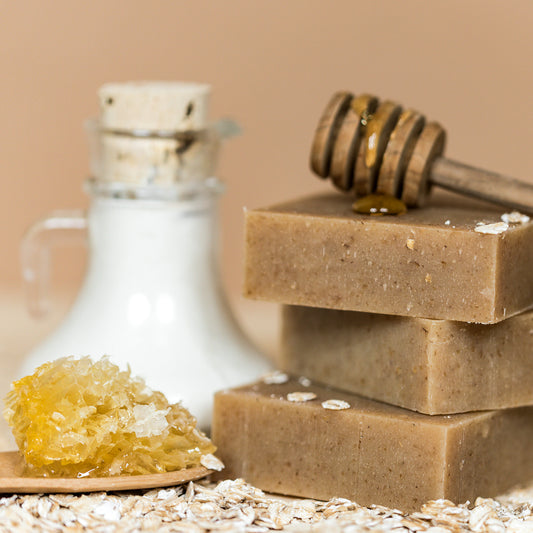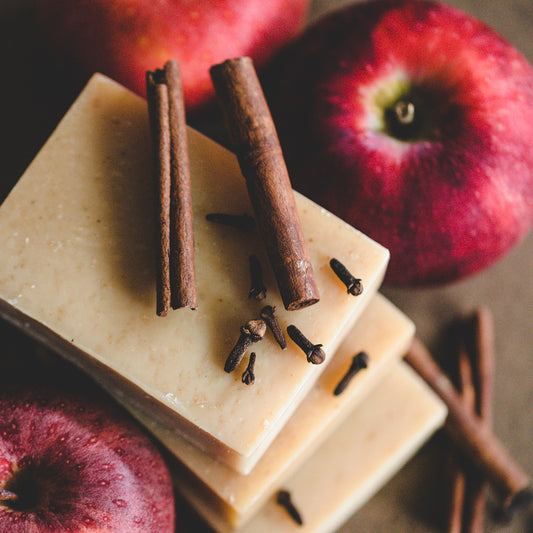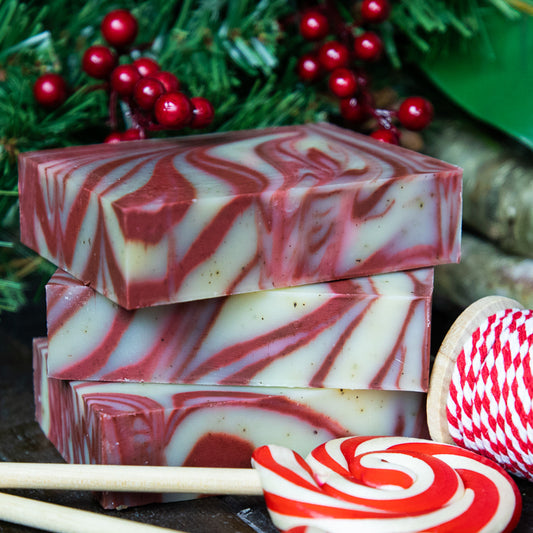What is the Difference Between Commercial Soap and Handmade Natural Soap?
You are trying to decide whether to purchase a bar of handmade natural soap or a commercial brand of soap.
 The natural soap bar costs more than commercial soap. So you ask yourself,"Is there really a difference between commercial soap & natural soap? I mean, soap is soap, right? Both bars clean your skin, right?"
The natural soap bar costs more than commercial soap. So you ask yourself,"Is there really a difference between commercial soap & natural soap? I mean, soap is soap, right? Both bars clean your skin, right?"
While I may agree that both bars clean the skin, the similarity goes no further.
Obviously, I am quite biased in favor of natural soap--I admit it. But I believe it to be true with all my heart!
From its composition, to its benefits for the skin and health, to its impact on the environment, natural soap is very different from commercial soap.
The level of care and attention that goes into producing a batch of cold process soap is unparalleled in commercial soaps when you consider the ingredients, the manufacturing process, the environmental impact, the effect on your skin, and I could go on and on.
The recipes use sustainable, environmentally friendly natural and organic ingredients in an age-old process to produce a great lathering mild soap that promotes healthy skin.
Not to forget that the goals and mission of a small business are also quite different from those of a large corporation.
Once we've laid out these key differences, we're excited for you to journey into the world of choosing the perfect natural soap for you.
Is Your Soap Really Soap Or Is It Detergent?
We probably use the word “soap” every day to simply mean some sort of cleansing agent. What we do not realize is that most of what we call “soap” is actually not soap at all!
Look at the label on your bar of commercial soap, shower gel, or facial cleanser. Is it called "soap" on the label, or is it a “beauty bar,” “cleansing bar,” or “deodorizing bar?”
If it does not say "soap" then it is not really soap!
Commercial bar soaps are produced on a large scale with synthetic fragrances, artificial colors, preservatives, foam boosters, and detergents, all of which can irritate your skin.
Today there are very few true soaps in the general marketplace and even fewer natural soaps. Most body cleansers, both liquid and solid, are actually synthetic detergent products.
Detergent cleansers are popular because they make suds easily in water and don't form gummy deposits.
Some of these detergent products are actually marketed as "soap" but are not true soap according to the regulatory definition of the word.
So, What Is Soap?
The word "Soap" actually has a legal definition provided by the FDA. Most commercial brands are not called soap because they are detergents and do not meet the legal definition of soap.
To meet the definition of soap according to FDA’s regulations:
The product must be composed mainly of the “alkali salts of fatty acids,” that is, the material you get when you combine fats or oils with an alkali, such as lye.
Those “alkali salts of fatty acids” must be the only material that results in the product’s cleaning action. If the product contains synthetic detergents, it is not a soap.
Both soaps and detergents are surfactants (a blended word that comes from "surface-active agents"). A surfactant decreases the surface tension of water which allows grease and water to mix.
But, soaps and detergents are NOT the same.
Handmade Natural Soaps are made of materials found in nature, like pure plant-based oils, oats, honey, and goat milk.
Detergents are synthetic and were developed during World War I in response to a shortage of the animal and vegetable fats and oils needed to make natural soap.
Learn More Blog: How Does Soap Work
What About Glycerin?
 You will not see the word "glycerin" on the ingredient list of a natural soap bar. But it is there!
You will not see the word "glycerin" on the ingredient list of a natural soap bar. But it is there!
Glycerin is a product of the natural soap making process called saponification, it is not added to the soap. As a result you will NOT see the word "glycerin" in the ingredient.
In commercial soap production, the glycerine is removed and used for other skin care products or goods like sweeteners. Without the moisturizing glycerine, commercial soaps often cause dry, itchy skin.
Our moisturizing cold processed natural soaps retain all of the natural glycerin.
What Are Syndets?
Most products you think of as "soap" are actually synthetic detergents or "syndets."
Syndet is a blended word made by combining the words “synthetic” and “detergent.” Read our blog, "What are Syndets?"
The theory is that the word was invented by the personal care industry to make their products that contain synthetic detergents sound more attractive to consumers who tend to shy away from synthetic skincare.
A "synthetic detergent bar" does not sound very appealing, while a "syndet bar" sounds like it is something special. They are often fun colors, pretty scents, and lather very well due to the synthetic foaming agents in the detergents.
The label of ingredients on a bar of commercial soap has a long list of unpronounceable chemicals. Whether or not these synthetic chemical additives are bad for you and the environment may be up for debate, but chances are you are better off without them.
The chart below compares Chagrin Valley Natural Soap with a popular moisturizing brand.
Compare For Yourself
Chagrin Valley
|
Dove
|
And...Dove Is The Bar Most Recommended As A Mild Soap.
Read The Label On A Bar Of Your Favorite Commercial Soap!
After comparing ingredients ask yourself . . .
So, what do you want to put on your skin?

How We Make Soap At Chagrin Valley
Is There Lye In Natural Soap? Won't It Harm My Skin?
How Does Natural Soap Create Lather?
The True Cost of Commercial Soap
12 Reasons To Use Natural Soap
